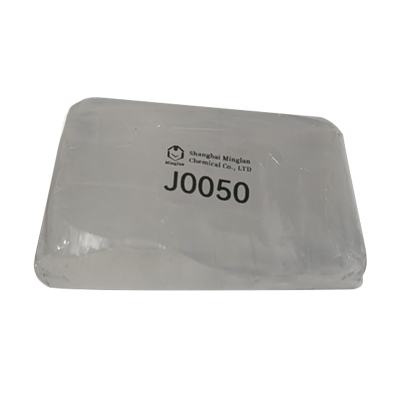-
Categories
-
Pharmaceutical Intermediates
-
Active Pharmaceutical Ingredients
-
Food Additives
- Industrial Coatings
- Agrochemicals
- Dyes and Pigments
- Surfactant
- Flavors and Fragrances
- Chemical Reagents
- Catalyst and Auxiliary
- Natural Products
- Inorganic Chemistry
-
Organic Chemistry
-
Biochemical Engineering
- Analytical Chemistry
-
Cosmetic Ingredient
- Water Treatment Chemical
-
Pharmaceutical Intermediates
Promotion
ECHEMI Mall
Wholesale
Weekly Price
Exhibition
News
-
Trade Service
On March 2, the 26th OPEC and non-OPEC ministerial meeting was held in the form of a video conference, and as widely expected, the oil producer organization OPEC+ decided to promote the fourth consecutive month of production increase plans
of 400,000 bpd.
After the announcement, the WTI crude oil near-month contract broke through the $110 mark intraday, hitting a new high since 2011, and the global benchmark Brent crude oil price broke through $
113 per barrel.
Tamas Varga, senior market analyst at crude oil broker PVM Oil Associates, said in an interview with reporters that there are now two factors that are dominating the oil market, on the one hand, the threat of the escalating situation in Ukraine to Russia's energy exports, and on the other hand, the restart of the Iranian nuclear agreement will allow Iranian oil to return to the market
.
He believes that in contrast, the development of the situation in Ukraine may have more far-reaching consequences, and the entry of Iranian crude oil into the market may alleviate the supply-side situation, but it is not enough to reverse the market's concerns about
the supply and demand outlook.
Varga expects tight supply and demand tensions, combined with a new summer consumption boom, to keep oil prices high in the coming months
.
OPEC withstood the pressure of excess production
According to a statement posted on OPEC's official website, the parties agreed to reconfirm the production adjustment plan and monthly production adjustment mechanism approved by the 19th Ministerial Conference, and increase the total monthly production in April by 400,000 bpd
.
According to OPEC+'s previous agreement, member states will release 400,000 bpd of capacity month after month from August last year until the end of the year, while the agreement that originally expired in April 2022 will continue to be extended to December
of the same year.
With regard to the recent oil price movements, the member states believe that the fundamentals of the oil market and the consensus on its prospects indicate that the market is in a good equilibrium and that the current volatility is not caused by changes in market fundamentals, but by current geopolitical developments
.
The Committee reiterated the critical importance of upholding full compliance and compensation mechanisms, with the deadline for compensating countries that have not yet completed quotas extended to June
2022.
The compensation plan shall be submitted
in accordance with the statement of the 15th Ministerial Conference.
According to the schedule, the next meeting will be held
on March 31.
With the escalation of the situation in Ukraine pushing up energy prices significantly, OPEC+ has once again withstood pressure
from the United States and major oil consumers.
Last week, Arab oil and energy ministers said at the 2022 International Petroleum Technology Conference (IPTC) in Riyadh, Saudi Arabia, that OPEC+ must unite and maintain consensus
for the long-term stability of the oil market.
The energy ministers of the UAE, Kuwait and Iraq said the group should stick to the current production deal to keep the market balance to avoid any excesses
.
The tight supply and demand tension is difficult to alleviate in the short term
The dire situation in Ukraine is exacerbating short-term energy supply risks
.
Russia is the second largest member of OPEC+, with a production capacity of about 10% of the world's oil supply, and exports about 4 million to 5 million barrels of crude oil
per day.
The country's crude oil exports are currently facing major challenges, with Russian Urals crude selling at a record high of more than $10 above the Brent benchmark discount, and market buying is drying up
sharply for sanctions reasons.
At the same time, OPEC is gradually increasing production while moving away
from the capacity target.
A report released Tuesday by the OPEC+ Joint Technical Committee showed that OPEC+ produced 972,000 barrels
less per day in January than agreed targets.
Varga told reporters that calls for OPEC+ production increases are getting louder because demand has proven to be stronger than expected, but some OPEC members have been unable to achieve their goals
due to years of underinvestment leading to aging oil infrastructure.
A series of headwinds are driving global crude oil inventories to continue to fall
.
The IEA noted last month that OECD commercial oil inventories were at their lowest level in more than seven years, meeting consumption in less than 60 days
.
For consumers, the $100 oil price is clearly not good news
.
Policy assessments by policymakers need to be adjusted – for example, the ECB's previous economic forecasts assume that Brent crude will be just $
77.
50 in 2022.
Cost pressures driven by energy prices could prompt businesses to pass on costs to consumers, and diffusion effects could lead to a broader inflationary spiral that forces central banks to act
.
ECB Governing Council Isabel Schnabel said recent rising energy prices could force the ECB to focus on "scrutinizing" high inflation and taking action to curb price growth
.
As an attempt to stabilize oil prices, the International Energy Agency (IEA) held a special meeting on Tuesday to coordinate the release of 60 million barrels of oil inventories, but the actual results are not satisfactory
at present.
Varga analyzed that the main reason is that the demand side behind high oil prices remains strong, and it can be seen that the demand of major consumer countries such as China, India and the United States has remained elastic
.
Of course, as oil prices climb above $100 a barrel, consumers may become increasingly wary of high prices, causing demand disruption, but this may require geopolitical stability and panic to be released
.
Iranian crude oil "far water is difficult to quench the thirst"
Iran's chief nuclear negotiator, Ali Bagheri Kani, said on social media earlier this month that a deal was "closer than ever" to work with the parties on resuming the nuclear deal
.
However, there are still major differences
on how to achieve Iran's curtailment of nuclear activities in exchange for easing sanctions.
The reporter noted that the views of all parties on the prospects of restoring the Iranian nuclear agreement tend to be optimistic, and OPEC is also actively preparing for
this.
Sources close to OPEC said OPEC+ would work to include Iran in its oil supply deal if the parties reached an agreement
.
S&P Global Platts predicts that OPEC+ sustainable standby capacity will be reduced to 1.
2 million bpd by June, and that this spare capacity will increasingly be concentrated in Saudi Arabia, the UAE and Kuwait, and the inclusion of Iran can avoid market share competition
that could affect prices.
Asked recently whether OPEC+ would develop a new supply deal that includes Iran, OPEC Secretary-General Barkindu said, "Since the historic partnership between OPEC and non-OPEC has survived the past five years, helping us through two oil cycles, we have every reason to be reasonably optimistic about
the future.
" He said
.
But how to mitigate geopolitical risks in Eastern Europe remains key to energy markets, as Iran's export capacity is only about
half that of Russia.
Varga said tensions in Ukraine will continue to drive crude oil prices stronger
.
Healthy demand growth and difficult supply augur well for this year's tight market – demand release is still limited by the pandemic in the first half of the year, and the situation will be even more severe
in the second half of 2022 as demand returns to pre-epidemic levels.
On the supply side, for non-OPEC producers, the scale effect of the increase in production brought about by high oil prices may not see the actual effect until next year at the earliest, and the status quo that most OPEC+ oil producers cannot meet the quota is difficult to change
immediately.







